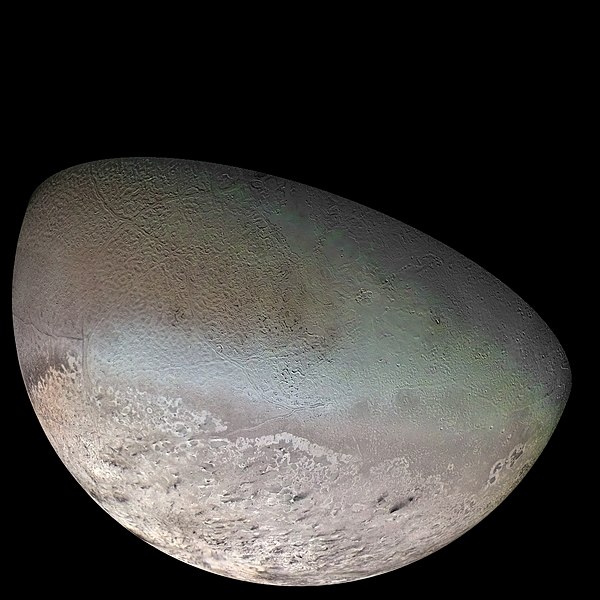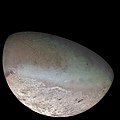ملف:Triton moon mosaic Voyager 2 (large).jpg

حجم البروفه دى: 600 × 600 بكسل. الأبعاد التانيه: 240 × 240 بكسل | 480 × 480 بكسل | 768 × 768 بكسل | 1,024 × 1,024 بكسل | 2,048 × 2,048 بكسل | 4,700 × 4,700 بكسل.
الصوره الاصليه (4,700 × 4,700 بكسل حجم الفايل: 12.11 ميجابايت، نوع MIME: image/jpeg)
تاريخ الفايل
اضغط على الساعه/التاريخ علشان تشوف الفايل زى ما كان فى الوقت ده.
| الساعه / التاريخ | صورة صغيرة | ابعاد | يوزر | تعليق | |
|---|---|---|---|---|---|
| دلوقتي | 19:40، 10 اكتوبر 2011 |  | 4,700 × 4,700 (12.11 ميجابايت) | Jbarta | Minimally compressed JPG from TIFF original at NASA. This image has already been colored by NASA. I think we have no business trying to "fix" the coloring. The only alteration made from the NASA original is to enlarge the canvas to enclose the complete sp |
| 21:00، 1 يناير 2010 |  | 4,600 × 4,600 (2.81 ميجابايت) | Supportstorm | Image Adjustments: Auto levels on contrast and color | |
| 21:59، 18 فبراير 2008 |  | 4,600 × 4,600 (1.71 ميجابايت) | Kaldari | same image, better dimensions | |
| 04:59، 8 ابريل 2005 |  | 4,500 × 3,500 (1.96 ميجابايت) | Bricktop | same image, higher resolution | |
| 17:13، 3 ابريل 2005 |  | 1,024 × 796 (150 كيلوبايت) | Smartech~commonswiki | A color mosaic of Triton, Neptune's moon (large). Taken by Voyager 2 in 1989. Color was synthesized by combining high-resolution images taken through orange, violet, and ultraviolet filters; these images were displayed as red, green, and blue images and |
استخدام الفايل
ال3 صفحة دى فيها وصله للفايل ده:
استخدام الملف العام
الويكيات التانيه دى بتستخدم الفايل ده:
- الاستخدام ف af.wikipedia.org
- الاستخدام ف an.wikipedia.org
- الاستخدام ف ar.wikipedia.org
- الاستخدام ف ary.wikipedia.org
- الاستخدام ف ast.wikipedia.org
- الاستخدام ف azb.wikipedia.org
- الاستخدام ف az.wikipedia.org
- الاستخدام ف ba.wikipedia.org
- الاستخدام ف be-tarask.wikipedia.org
- الاستخدام ف be.wikipedia.org
- الاستخدام ف bg.wikipedia.org
- الاستخدام ف bn.wikipedia.org
- الاستخدام ف bn.wikibooks.org
- الاستخدام ف bs.wikipedia.org
- الاستخدام ف ca.wikipedia.org
- Neptú (planeta)
- Tritó (satèl·lit)
- Satèl·lit natural
- Satèl·lits de Neptú
- Voyager 2
- Cronologia del descobriment dels planetes del sistema solar i dels seus satèl·lits naturals
- Viquipèdia:Articles espacials seleccionats
- Plantilla:Article espacial 01
- Llista d'objectes del sistema solar en equilibri hidroestàtic
اعرض استخدام عام اكتر للملف ده.


